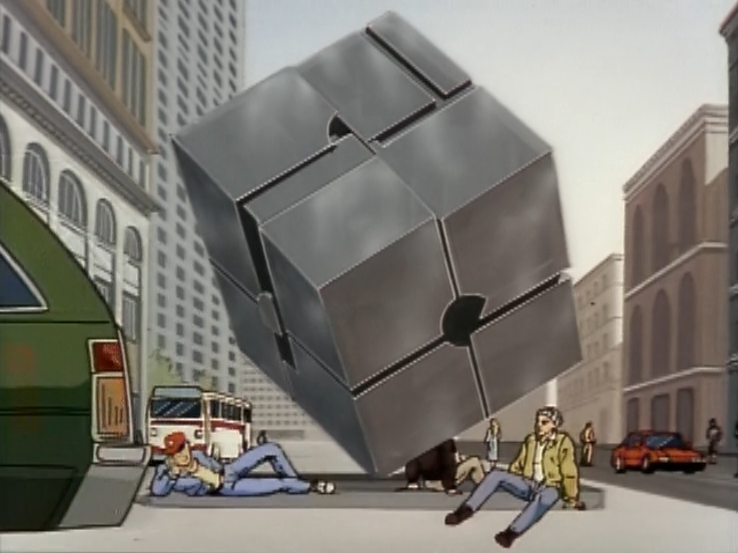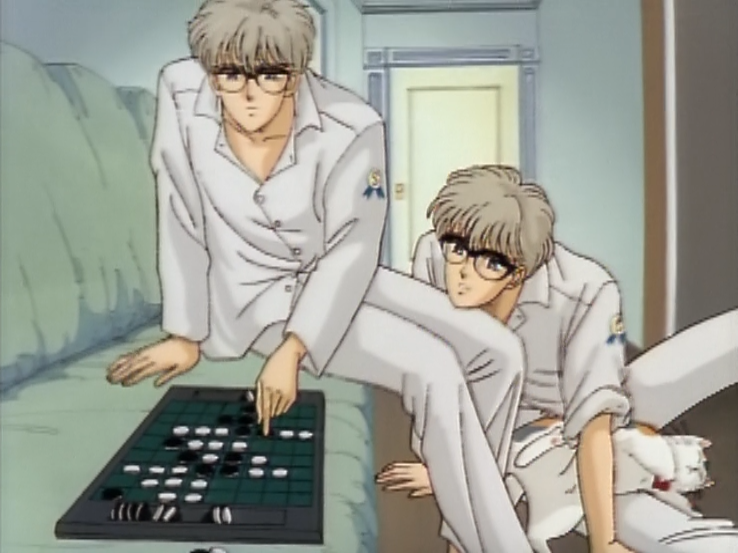As I have said before, few people get New York City right and anime is no exception. I don’t begrudge artists in other countries for not being aware of the minute proportions of a foreign city (the anime Banana Fish is a striking example). But that’s precisely what makes Cipher: The Video is so singularly unique. It’s not just that it gets the proportions of New York correct. It accurately captures a moment in time and culture, namely mid to late 80s New York City, in the strangest way possible.
Cipher: The Video is a short OVA from 1989, the main feature being 26 minutes long, and immediately several things about it are striking. The dialogue is all in stilted English. The music is entirely comprised of pop hits, including covers of “Against All Odds” by Phil Collins and “Let’s Hear It For The Boy'' and “Footloose” from the movie Footloose, and “Kamikaze” by the Thompson Twins, which they got permission to use. It’s like watching a single incoherent music video with a shojo plot that is difficult to parse. And, importantly, it is set in a New York City with a shocking degree of accuracy.

Cipher started off as a manga by Minako Narita from 1984-1990, following dreamy identical twin stars Shiva and Cipher (Jake and Roy Lang), who begin to trade places and in the process melt their identities together (sort of like a bishonen Dead Ringers). Eventually the characters appeared in a commercial for Sumimoto Life Insurance, leading up to the production of the OVA itself. Cipher: The Video itself is not particularly strict in its approach to telling this story, instead opting to be a series of jukebox music videos following the twins.

To the extent that there is a plot, the details are kept vague. The twins live in New York City, wandering the streets in handsome melancholy set against the Twin Towers and the grime of 80s New York. Both appear to be big bishonen on campus, doing various fun activities like going to the West Village Halloween party, while a girl named Anise develops a crush on one or both of them. Shiva (Siva in the OVA) stars in a football-themed movie called “Winning Tough” in a brief Hollywood interlude done in the art style of Hiroshi Nagai and Eizen Suzuki (a style seen in many City Pop covers which Wit Studio’s The Great Pretender also aped). From there on it’s really hard to figure out what happens, but Shiva is sad because his brother is sick and mopes around the city, reminiscing about childhood funerals. Eventually Cipher gets better and wakes up and they decide to have yogurt and that’s the end of the anime. There is also a lot of weird romantic tension between the two of them, in a semi creepy way that makes sense in an 80s girly manga about two really pretty guys that might be the same guy.

It’s obvious why this anime has languished in obscurity for so long. Aside from being hard to find and never available on DVD, it’s hard to call it “good,” but it is undeniably singular. What elevates it is not just the sheer strangeness of the execution, but the 13 minute mini documentary that is included directly following the feature. Dubbed “C.N.N. Video Special” (Cipher News Network), the voice of Cipher explains, in character, the context in which this bizarre OVA got made.
“What do you think is inside this blackness? Hidden inside are all the many processes involved in making this video,” Cipher says.

It turns out the reason why Cipher has such accurate depictions of New York City circa the 80s is because they actually sent people to location hunt for it, focusing on the East Village. This is why The Rivington Sculpture Garden, a famous guerilla junk sculpture space that was eventually demolished in the late 80s, briefly makes a cameo. The creators also chose to focus on depictions of the Twin Towers from every possible angle, a choice that resonates far differently now. You see this in the special in what are essentially home movies by the creators. To watch this footage of the city is striking, not only because of the transparency and frankness of the creators in their attempt to get the look of a city right, but also because it is a New York City that hasn’t existed for decades. Cipher isn’t a strange piece of art greenlit because of a life insurance commercial, it is also a moment in time suspended in amber.

There are other details in the special worth noting. The cast itself is entirely people who speak English fluently, albeit directing actors in anything but your first language is an uphill battle I don’t fault a creator for. The video also stresses that the director wanted the anime to be done in “MTV style,” the most 1980s choice imaginable.
Cipher: The Video has languished in obscurity for many years. Transfers were around, but this transfer in particular was done by the good folks at Kineko Video, a phenomenal group of scanners and restorers who work on preserving hard-to-find anime obscurities (like their 4k 16mm transfer and restoration of Super Mario Bros. - The Great Mission to Rescue Princess Peach). For this transfer, they pulled from the highest quality release available, the laserdisc, obtained by zawa113CJ with help from LonelyChaser fansubs. Using a process called ld-decode, they extracted the pure RF signal from a hacked LaserDisc player via a device called a DomesDay Duplicator. I only bring this up because I have one of those things in my house. I regularly do VHS and laserdisc decoding, and it’s one of the most fascinating and accurate methods for transferring tapes and discs.
You are only hearing about and seeing Cipher now at this quality because someone took the time, energy and money to preserve it. Preservation often only happens when people have the willpower to do it, as the degradation of media is a constant struggle against entropy and apathy. And Cipher is such a strange piece of art: a document of a city, of feeling and time in both New York and Japan, that does not hold together but exists as a temporal vertical slice. I am glad to have seen it and am always excited to share it with friends. I am happy it still exists in all its confusing glory.


